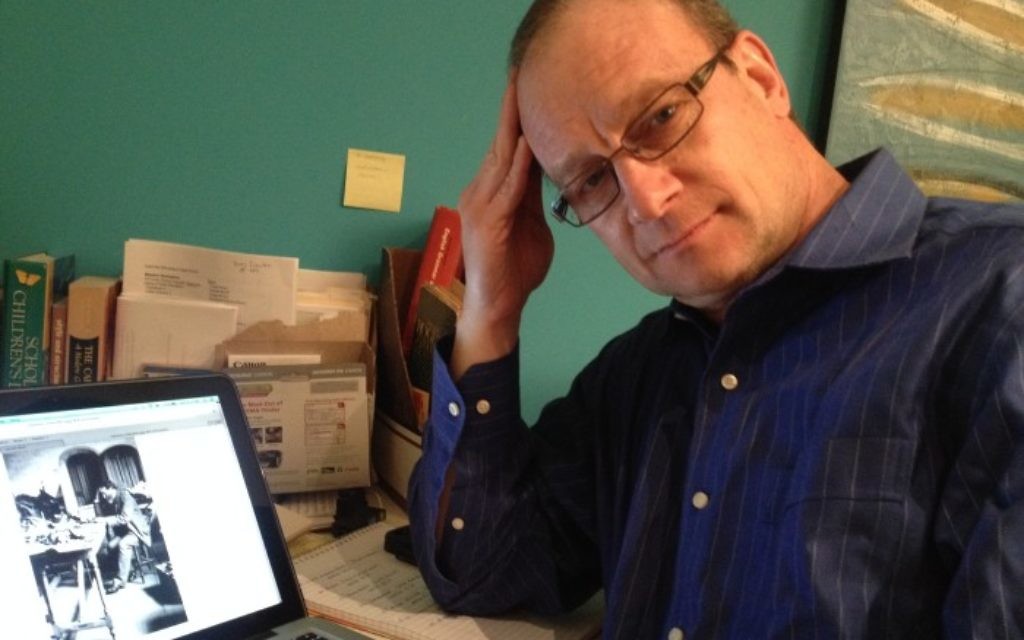THAT Congregation Marks Three Decades
This is why we joined our congregation:
Two decades ago, as my wife and I sat in the Rosh Hashanah morning service, the children’s service ended, and a dozen or so kids, including our almost-6-year-old daughter, quietly entered the room.
Without interruption, adults repositioned their chairs, opening an area on the floor where the children congregated with their toys or books. It was done naturally, without any fanfare.
Get The AJT Newsletter by email and never miss our top stories Free Sign Up
I grew up in a large congregation where on the High Holidays children dressed like small versions of their parents and were expected to behave likewise.
Here the presence of children was encouraged. Adults talked to them with genuine interest. If a child was rambunctious, someone other than a parent might pick her/him up. It was a small congregation and fairly easy to know most of the members. The Sunday school program began with just 10 children, our daughter among them.
Back then, when I identified the congregation, the response was often, “Oh, THAT congregation,” as if it were peculiar and not quite in the mainstream (aside from its affiliation with Judaism’s Reconstructionist movement).
Congregation Bet Haverim was different. It had been founded by gay and lesbian Jews who, for a myriad of reasons, did not feel welcome elsewhere and turned to one another to sustain and nurture their Judaism. CBH was created to ensure them a spiritual home.
Circumstances forced some of those pioneers to guard their identities, to maintain confidences out of real, not imagined, fears, and to express themselves as Jews only to the degree that they felt secure in their persons. For a time the congregation newsletter was mailed in a plain brown envelope to avoid inadvertently outing a member.
A couple of weeks ago, 140 people attended a video retrospective and panel discussion — with a cake and champagne afterward — to celebrate CBH’s 30th birthday (official papers of incorporation were filed with the state in June 1986).
An original member poignantly noted that because of the AIDS epidemic the fledgling congregation suffered deaths before it celebrated such simchas as births, weddings and b’nai mitzvah. The event underscored the importance of not forgetting history while planning for the future.
At its founding, CBH was not welcomed by segments of Atlanta’s Jewish communal structure. The founders resisted any compromise that amounted to less than equal status. Times have changed, and today the congregation finds Jewish allies on a variety of fronts.
From the four men who conceived the congregation around a seder table in April 1985, there are now 275 member households. High Holiday services — no ticket required — attract twice that number. The Sunday school has some 125 children.
Congregation Bet Haverim as an entity and its congregants individually have an evolving commitment to what it means to be Jewish, both in its responsibilities and its opportunities.
Our rabbi is an Atlanta native who, leading by example, exemplifies the injunction to pursue social justice spoken of in Deuteronomy.
Like other congregations, we have a board and staff and committees and members who volunteer and members who don’t.
We have fielded a team in the congregational men’s softball league, albeit in the lowest division and with a record of minimal distinction.
On the other hand, the choir’s reputation extends beyond the sanctuary’s walls and has brought invitations to sing at various Atlanta events.
Toward the end of services, CBH congregants recite the “Prayer for the End of Hiding,” which speaks to a desire that the LGBT community in particular and Jews in general be able to live authentically and express themselves openly. The prayer speaks to a time when attitudes in and beyond the Jewish world were less welcoming and to challenges that remain today.
Congregation Bet Haverim has entered its fourth decade with the confidence of knowing that it belongs, with a home of its own (a dream realized shortly after the High Holidays last year) and with a membership that belongs because, for a myriad of reasons, there is no place else we can imagine being.





comments